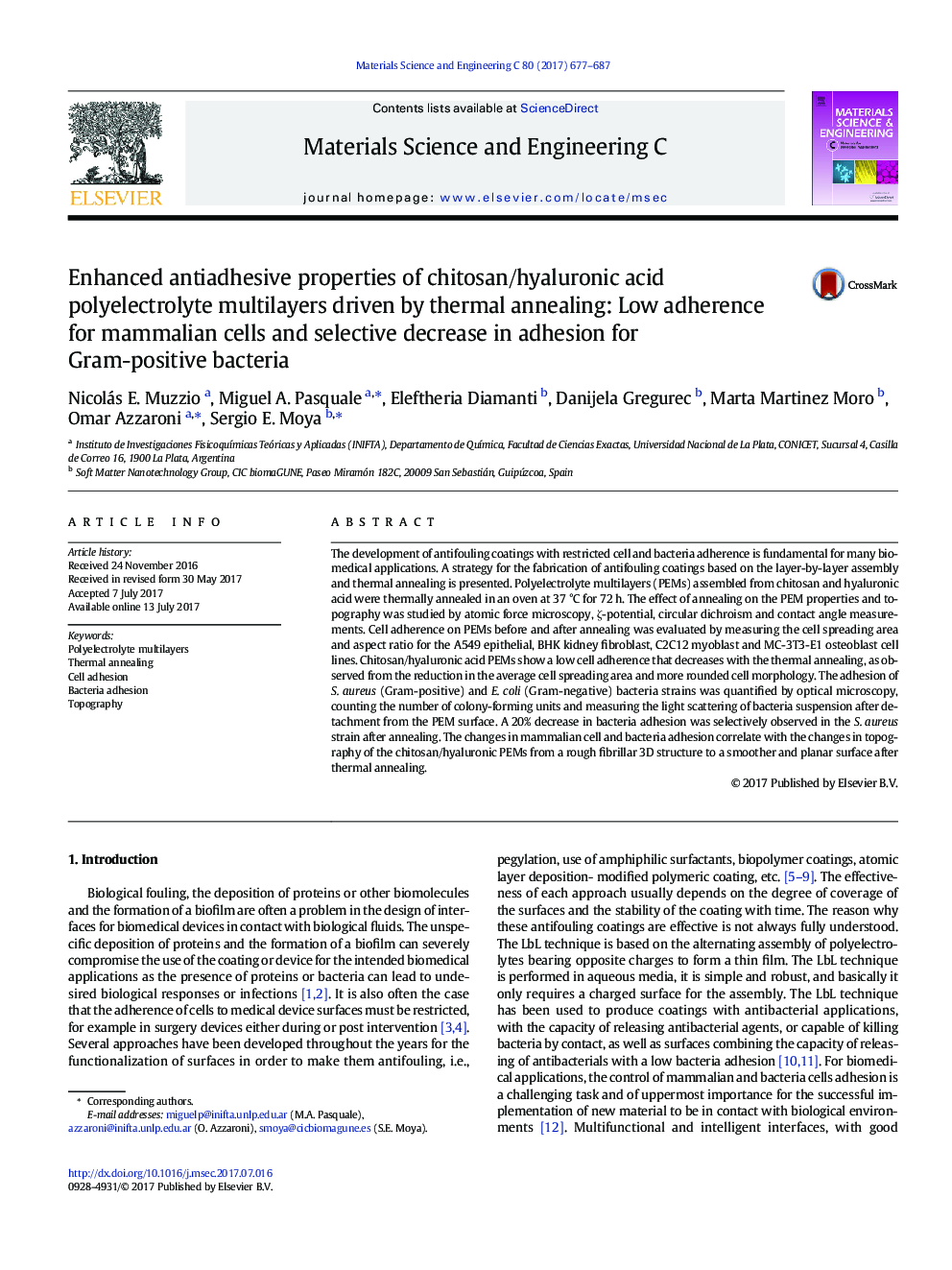| کد مقاله | کد نشریه | سال انتشار | مقاله انگلیسی | نسخه تمام متن |
|---|---|---|---|---|
| 5434365 | 1509141 | 2017 | 11 صفحه PDF | دانلود رایگان |
- Thermal annealing enhances antifouling properties in chitosan/hyaluronate multilayers.
- Topography changes induced by the thermal annealing affect the antifouling characteristics of the multilayers.
- The increase in anti-adhesive properties is observed for different cell lines.
- Selective anti-adhesion for S. aureus bacteria is observed after thermal annealing.
The development of antifouling coatings with restricted cell and bacteria adherence is fundamental for many biomedical applications. A strategy for the fabrication of antifouling coatings based on the layer-by-layer assembly and thermal annealing is presented. Polyelectrolyte multilayers (PEMs) assembled from chitosan and hyaluronic acid were thermally annealed in an oven at 37 °C for 72 h. The effect of annealing on the PEM properties and topography was studied by atomic force microscopy, ζ-potential, circular dichroism and contact angle measurements. Cell adherence on PEMs before and after annealing was evaluated by measuring the cell spreading area and aspect ratio for the A549 epithelial, BHK kidney fibroblast, C2C12 myoblast and MC-3T3-E1 osteoblast cell lines. Chitosan/hyaluronic acid PEMs show a low cell adherence that decreases with the thermal annealing, as observed from the reduction in the average cell spreading area and more rounded cell morphology. The adhesion of S. aureus (Gram-positive) and E. coli (Gram-negative) bacteria strains was quantified by optical microscopy, counting the number of colony-forming units and measuring the light scattering of bacteria suspension after detachment from the PEM surface. A 20% decrease in bacteria adhesion was selectively observed in the S. aureus strain after annealing. The changes in mammalian cell and bacteria adhesion correlate with the changes in topography of the chitosan/hyaluronic PEMs from a rough fibrillar 3D structure to a smoother and planar surface after thermal annealing.
414
Journal: Materials Science and Engineering: C - Volume 80, 1 November 2017, Pages 677-687
